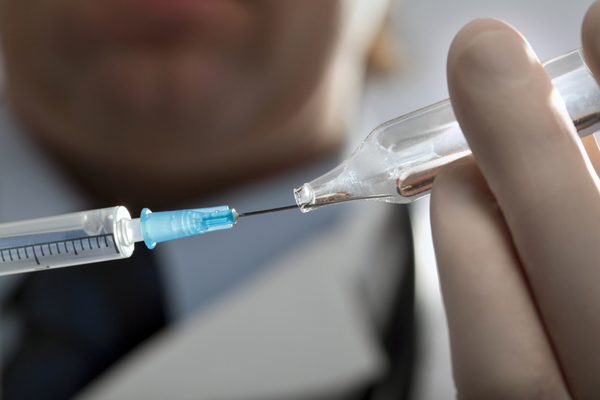Needle Pricks Less Painful if Out of Sight

The prick of a needle during an injection hurts more if you see it, new research suggests. Researchers found that If you look away from an injection, it hurts less.
"Throughout our lives, we repeatedly experience that needles cause pain when pricking our skin, but situational expectations, like information given by the clinician prior to an injection, may also influence how viewing needle pricks affects pain," study researcher Marion Höfle, a graduate at the Charité — Universitätsmediz, in Germany, said in a statement.
Taken together, the study, detailed today in the May 2012 issue of the journal PAIN, reveals several important findings. "Clinicians may be advised to provide information that reduces a patient’s expectation about the strength of forthcoming pain prior to an injection," Höfle said. "Because viewing a needle prick leads to enhanced pain perception as well as to enhanced autonomic nervous system activity, we’ve provided empirical evidence in favor of the common advice not to look at the needle prick when receiving an injection."
The researchers studied patient's reactions when watching video clips showing a needle pricking a hand, a Q-tip touching the hand, or a hand alone, study participants concurrently received painful or non-painful electrical stimuli applied to their own hand. The clips were presented on a screen located above the participants’ hand, giving the impression that the hand on the screen belonged to them.
Participants reported that their pain was more intense and more unpleasant when they viewed a needle pricking a hand than when they saw a hand alone. In addition, observing needle pricks increased the unpleasantness of pain compared to viewing Q-tip touches. These findings were paralleled by enhanced activity of the involuntary part of nervous system, as measured by pupil dilation responses. This demonstrates that previous painful experiences with needles enhance unpleasantness of pain when viewing needle pricks.
Situational expectations also influenced perceived pain intensity. Prior to the stimulation, participants were told that either the needle or the Q-tip clip was more likely to be associated with painful than with non-painful electrical stimulation. The researchers found that presentation of clips that were more likely to be associated with pain lead to higher pain intensity experiences than the presentation of clips that were less likely to be associated with pain.
This shows that expectations regarding the painfulness of medical treatments influence the intensity of pain that the treatment ultimately produces.
Sign up for the Live Science daily newsletter now
Get the world’s most fascinating discoveries delivered straight to your inbox.










